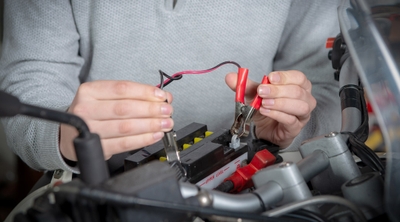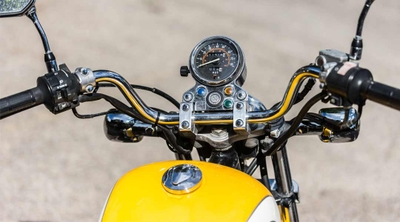What are motorcycle technology and safety features?
3 min read
Technology has improved motorcycle safety significantly in recent years. Features like anti-lock braking (ABS), electronic throttles, and adaptive headlights can decrease deadly crashes and increase pedestrian safety. But motorcyclists are still “overrepresented in fatal traffic crashes,” according to the National Highway Traffic Safety Administration (NHTSA). New motorcycle technology that has increased safety is a mix of familiar automotive features adapted for two wheels and motorcycle innovations to make motorcycles safer and easier to ride. Here are six things helping to make motorcycles safer.
New motorcycle technology and safety features
1. Anti-lock braking
Highway Loss Data Institute (HLDI) data indicates that anti-lock braking systems (ABS) are among the most effective motorcycle safety features available on modern bikes. Even better, all kinds of riders benefit from ABS. “Riders whom we would consider high-risk based on their driving benefit from ABS about the same as low-risk ones,” said HLDI Vice President Matt Moore. While ABS technology for motorcycles has been around since the late 1980s, it still isn’t standard on all bikes. But the Insurance Institute for Highway Safety has been pushing to make it mandatory equipment.
2. Electronic throttles and cruise control
Throttle locks, which hold the throttle in a fixed position, were a mechanical solution for hand fatigue on long rides. Electronic throttles (sometimes called “throttle by wire”) are a motorcycle innovation that makes it possible to use electronic cruise control on motorcycles, allowing riders to set and maintain a fixed speed with the push of a button. Electronic throttles also enable bikes to carry more responsive traction control systems, which can be especially helpful when riding a motorcycle in rain, riding a motorcycle in the snow and other bad weather.
Further innovations in motorcycle technology hope to one day combine electronic throttle with ABS and other sensor systems to make riding safer.
3. Advanced assistance systems
Radar-based rider assistance systems are now in production by several motorcycle manufacturers. These modern smart assistance systems can support a host of advanced motorcycle safety features. These include lane change assist, adaptive cruise control (automatically moderating speed to maintain safe following distances), collision warning, and even braking assistance, which is more difficult to implement for motorcycles than for cars. Modern motorcycle radar technology also enables assistance technology to detect potential dangers at distances greater than the length of a football field.
4. Vehicle-to-vehicle communication
In addition to radar systems that let a motorcycle sense obstacles and other vehicles on the road, vehicle-to-vehicle (V2V) systems allow vehicles to communicate directly, helping the vehicles alert riders and avoid crashes. According to the NHTSA, V2V can improve the performance of other safety systems and could be used in all kinds of vehicles, from buses to motorcycles or even bicycles.
5. Adaptive headlights
Corners are already one of the more dangerous scenarios for motorcyclists. Historically, turning in the dark was even more dangerous because it was difficult to illuminate the road surface ahead of the motorcyclist in a curve. New motorcycle technology, also borrowed from cars, allows for headlights with turning beams or secondary lights that activate when the bike corners to provide better visibility. Some adaptive headlights for motorcycles even account for the bike’s lean angle.
6. Airbag jackets and smart gear
Adequate motorcycle protective gear has always been a must for bikers, but advances in motorcycle safety devices have created smart clothing to help riders stay safe. Common examples include helmets with heads-up displays to help you keep your eyes on the road and smart gloves that hold the rider’s medical information in case of a crash or contain additional turn signals for better visibility.
Airbag jackets inflate like a car’s airbag when they sense a crash. According to a study presented through the International Research Council on the Biomechanics of Injury, these jackets provide a “level of protection [that] can be considered as important” at lower speeds.




